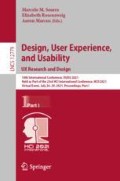Abstract
This research is motivated by the increasing significance of situated and sketching activities to co-speculate alternative futures. Our purpose is to present newspapers as imaginary material and how they relate to rich speculation in domestic networked-objects with regard to the emerged entanglement experience. As most studies aim at providing representation of everyday life and imaginative triggers as entanglement material for speculation, this research focuses on the relationship between news headlines and evocative objects. We then explore how collaging and sketching with everyday objects, app-icon stickers together with the present and the past newspapers help to speculate the utopian, or dystopian worlds. Findings show that newspapers become an effective catalyst to slightly defamiliarize our daily life and break the inertial thinking. Based on the collages, we design speculative products that explore the diversity of the possible IOT futures. Finally, we present illustrative cases with interpretations and heuristic implications.
Access this chapter
Tax calculation will be finalised at checkout
Purchases are for personal use only
References
Barad, K.: Meeting the Universe Halfway: Quantum Physics and the Entanglement of Matter and Meaning, 2nd edn. Duke University Press Books, Durham (2007)
Frauenberger, C.: Entanglement HCI-The Next Wave? ACM Trans. Comput. Hum. Interact. (TOCHI) 27(1), 2:1–2:27 (2019)
Frauenberger, C.: Entanglements. ACM Trans. Comput. Hum. Interact. 27(1), 74–75 (2020). https://doi.org/10.1145/3364998
Bressa, N., Wannamaker, K., Korsgaard, H., Willett, W., Vermeulen, J.: Sketching and ideation activities for situated visualization design. In: Proceedings of the 2019 on Designing Interactive Systems Conference (DIS 2019), New York, NY, USA, pp. 173–185. ACM (2019). https://doi.org/10.1145/3322276.3322326
Desjardins, A., Key, C., Biggs, H. R., Aschenbeck, K.: Bespoke booklets: a method for situated co-speculation. In: Proceedings of the 2019 on Designing Interactive Systems Conference (DIS 2019), New York, NY, USA. pp. 697–709. ACM (2019). https://doi.org/10.1145/3322276.3322311
DiSalvo, C., Jenkins, T., Lodato, T.: Designing speculative civics. In: Proceedings of the 2016 CHI Conference on Human Factors in Computing Systems (CHI 2016), pp. 4979–4990 (2016). https://doi.org/10.1145/2858036.2858505
Wakkary, R., et al.: Morse things: a design inquiry into the gap between things and us. In: Proceedings of the 2017 Conference on Designing Interactive Systems (DIS 2017), pp. 503–514 (2017). https://doi.org/10.1145/3064663.3064734
Wakkary, R., Oogjes, D., Lin, H. W. J., Hauser, S.: Philosophers living with the tilting bowl. In: Proceedings of the 2018 CHI Conference on Human Factors in Computing Systems (CHI 2018), pp. 94:1–94:12 (2018). https://doi.org/10.1145/3173574.3173668
Turkle, S., (ed.).: Evocative Objects: Things We Think With. MIT Press, Cambridge (2007)
Zimmerman, J., Forlizzi, J., Evenson, S.: Research through design as a method for interaction design research in HCI. In: Conference on Human Factors in Computing Systems - Proceedings, January, pp. 493–502 (2007). https://doi.org/10.1145/1240624.1240704
Gaver, W.: Making spaces: how design workbooks work. In: Proceedings of the 2011 CHI Conference on Human Factors in Computing Systems (CHI 2011), New York, NY, USA, pp. 1551–1560. ACM (2011). https://doi.org/10.1145/1978942.1979169
Haraway, D.: Situated knowledges: the science question in feminism and the privilege of partial perspective. Feminist Stud. 14(3), 575–599 (1988). https://doi.org/10.2307/3178066
McCarthy, J., Wright, P.: Technology as Experience. MIT Press, Cambridge (2004)
Dourish, P.: Where the Action Is. MIT Press, Cambridge (2001)
Gorkovenko, K., Burnett, D. J., Thorp, J.K., Richards, D., Murray-Rust, D.: Exploring the future of data-driven product design. In: Proceedings of the 2020 CHI Conference on Human Factors in Computing Systems (CHI 2020), New York, NY, USA, pp. 1–14. ACM (2020). https://doi.org/10.1145/3313831.3376560
Voros, J.: A generic foresight process framework. Foresight 5(3), 10–21 (2003). https://doi.org/10.1108/14636680310698379
Amara, R.: The futures field: functions, forms, and critical issues. Futures 6(4), 289–301 (1974). https://doi.org/10.1016/0016-3287(74)90072-X
Amara, R.: The futures field: searching for definitions and boundaries. Futurist 15(1), 25–29 (1981)
Bell, G., Blythe, M., Sengers, P.: Making by making strange: defamiliarization and the design of domestic technologies. ACM Trans. Comput. Hum. Interact. (TOCHI) 12(2), 149–173 (2005). https://doi.org/10.1145/1067860.1067862
Bardzell, J., Bardzell, S.: Humanistic HCI. Synthesis Lectures on Human-Centered Informatics. Morgan and Claypool Publisher (2015)
Wang, C.-Y.: A few words on precedence of title over text body in news writing. North. Econ. Trade 9, 154–155 (2009)
Bly, R.W.: The Copywriter’s Handbook: A Step-By-Step Guide to Writing Copy That Sells, 4th edn. St. Martin’s Griffin, New York (2020)
Blythe, M.: Research fiction: storytelling, plot and design. In: Proceedings of the 2017 CHI Conference on Human Factors in Computing Systems (CHI 2017), New York, NY, USA, pp. 5400–5411. ACM (2017). https://doi.org/10.1145/3025453.3026023
Dunne, A., Raby, F.: Speculative Everything: Design, Fiction, and Social Dreaming. MIT Press, Cambridge (2013)
Soro, A., Taylor, J. L., Brereton, M.: Designing the past. In: Proceedings of CHI EA 2019 on Human Factors in Computing Systems. Glasgow, Scotland UK, New York, NY, USA. alt10, pp. 1–10. ACM (2019). https://doi.org/10.1145/3290607.3310424
Acknowledgement
This research was supported in part by the Ministry of Science and Technology of Taiwan (MOST 107–2410-H-011-018-MY2).
Author information
Authors and Affiliations
Corresponding author
Editor information
Editors and Affiliations
Rights and permissions
Copyright information
© 2021 Springer Nature Switzerland AG
About this paper
Cite this paper
Lee, WC., Tseng, HC., Liang, RH. (2021). Newspapers Do Work: Quick and Effective Entanglement Material for Speculation. In: Soares, M.M., Rosenzweig, E., Marcus, A. (eds) Design, User Experience, and Usability: UX Research and Design. HCII 2021. Lecture Notes in Computer Science(), vol 12779. Springer, Cham. https://doi.org/10.1007/978-3-030-78221-4_5
Download citation
DOI: https://doi.org/10.1007/978-3-030-78221-4_5
Published:
Publisher Name: Springer, Cham
Print ISBN: 978-3-030-78220-7
Online ISBN: 978-3-030-78221-4
eBook Packages: Computer ScienceComputer Science (R0)

